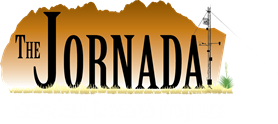Adaptive Monitoring in Support of Adaptive Management: Rangeland Special Issue
Adaptive management provides a flexible and iterative framework for identifying and addressing rangeland management concerns. This framework defines and facilitates the crucial processes of learning about the condition of rangelands, understanding how those conditions change in response to management actions, and revising management actions while considering new information and conditions. Rangeland monitoring is a key mechanism for learning about rangelands and supporting land management through time. Over the last several decades, scientists and resource managers have encouraged agencies, community groups, and operators to reevaluate their rangeland monitoring practices and to embrace contemporary ideals of standardization, statistical rigor and inference, and data management. New technologies provide emerging opportunities for gathering, analyzing, and delivering monitoring data to rangeland communities. As a result, there is increasing investment in coordinated national monitoring programs and elevated emphasis on multi-stakeholder monitoring. This special issue of Rangelands, guest edited by Jornada scientist Dr. Sarah McCord and Dr. David Pilliod at USGS examines the many aspects of contemporary monitoring to support adaptive management. The open access special issue brings together scientists and managers to take the next step in the ongoing dialogue about the value of current monitoring approaches and contemplating the future of rangeland monitoring. The goal is to prepare the next cohort of rangeland scientists and natural resource specialists for the future of adaptive management in our nation’s rangelands through the collection, stewardship, and use of monitoring data. This special issue covers a variety of topics, including: (1) lessons from university and professional monitoring courses for teaching monitoring to the next generation; (2) opportunities for improving data quality in monitoring; (3) sample design tools to empower spatially balanced, survey designs; (4) strategies for incorporating meaningful qualitative assessments into monitoring protocols; (5) remote sensing products for aiding management decisions; (6) perspectives on leveraging vegetation monitoring data for wildlife habitat modeling and assessments; (7) ways to engage community-led monitoring; and (8) examples from successful place-based monitoring and national monitoring programs.


